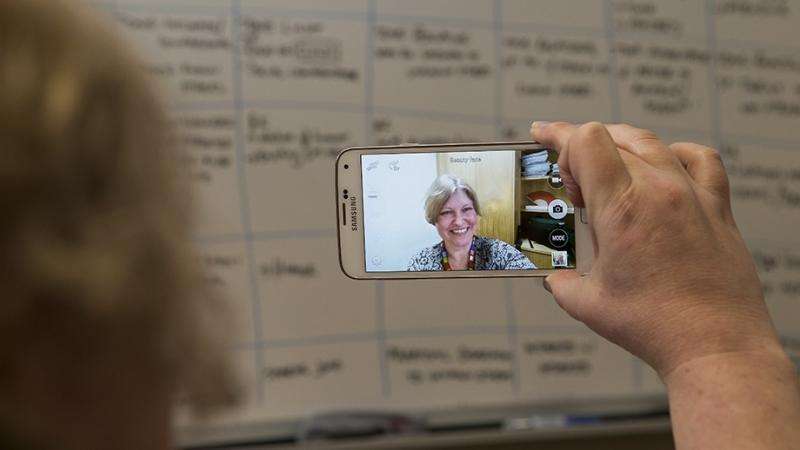Selfies are more than a form of vanity, research finds

An Australian National University (ANU) study analysing more than 5,000 Instagram selfies has found that 75 per cent of selfies are posted by women, and around one in 10 is posted by users purely looking to build an audience, usually in the hope of attracting paid endorsements or 'insta-fame'.
The study's co-authors, Dr Toni Eagar and Dr Stephen Dann of the ANU College of Business and Economics, said they also found users are successfully mimicking the marketing practices of businesses in a bid to build their profile.
"These are people selling a view of their lifestyle or themselves, and the currency of the transaction is likes and follows. The aim is to build an audience and establish a type of fame or admiration on social media," Dr Eagar said.
"This is a commercial exchange, just like small business activity. They are advertising. It was very deliberate, they had plans and they clearly had ambitions."
The goal for these users was often to attract companies looking to promote their products. Dr Dann said this is being driven by a trend of marketers moving away from traditional celebrity endorsements and towards social media influencers to sell their products.
"We're seeing a lot more interest in the smaller Instagrammers who have 500 to 1,000 followers but have high engagement. They have bigger impact," Dr Dann said.
The research also disputes the idea that selfies are a form of vanity, with Dr Eagar saying selfies are just becoming a normal part of life for young people.
"Around nine-in-10 selfies are not posted with the intent of self-promotion," she said.
"There were a lot more selfies aimed at friends and family than there were trying to gain an audience. It's neither narcissism nor self-empowerment. People are using selfies as a tool as part of their everyday life."
The study found seven distinct genres of selfies emerged from analysis of the dataset.
The autobiography selfie—35%
Used to document a person's life, ranging from the big moments such as graduations or weddings, to the mundane such as shopping, eating and simply being bored.
The romance selfie—21%
Used to celebrate being with significant others. This genre also included selfies which celebrated being single, often after a recent break up.
The parody selfie—12%
Used to express humour, often making fun of social media trends or current events.
The propaganda selfie—11%
Used to communicate physical attractiveness for the sole purpose of seeking followers. This genre most closely resembles the media critiques of the narcissism of selfie behaviour.
The coffee table book selfie—9%
High art selfies used to express artistic photography. This genre focuses on the manipulation of the image with hash tags about the type of camera and lenses used etc.
The self-help selfie—7%
Used to show off knowledge in a particular area such as diet, fitness or beauty. Often focusing on the idea that personal success is available to anyone willing to work long and hard enough to achieve it.
The travel diary selfie—6%
Used in place of a post card to celebrate being in a location. For example a trip to Italy, or the beach.
The study titled 'Classifying the narrated #selfie: genre typing human-branding activity' used software to randomly select 5,000 selfies over a period of 10 days. It has been published in the European Journal of Marketing.
More information: Toni Eagar , Stephen Dann , "Classifying the narrated #selfie: genre typing human-branding activity", European Journal of Marketing, www.emeraldinsight.com/doi/abs … 108/EJM-07-2015-0509
Provided by Australian National University





















